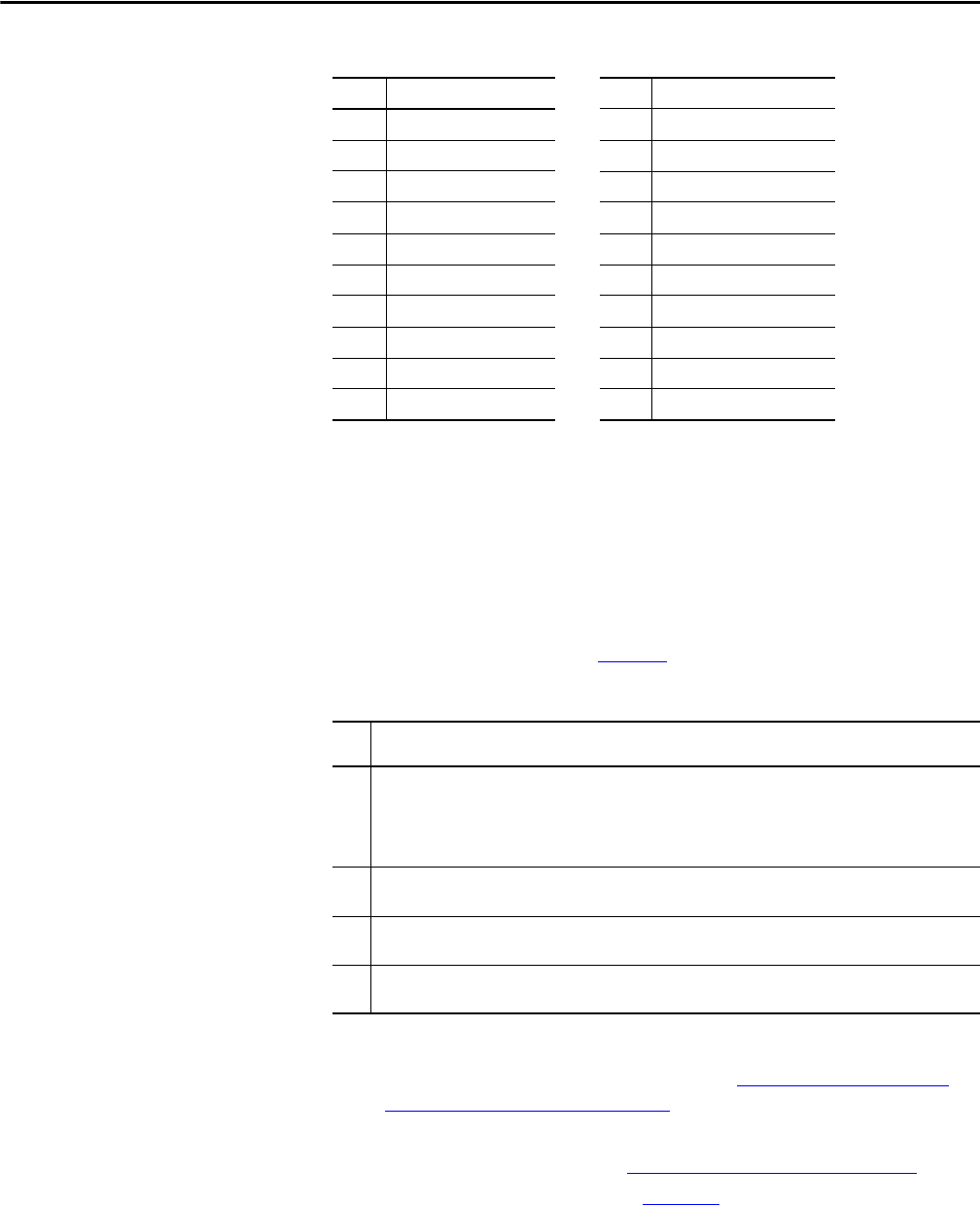Owner's manual
Table Of Contents
- Front Cover
- Important User Information
- Summary of Changes
- Table of Contents
- Introduction
- About the Drive
- Identifying the Drive by Cabinet Assembly ID Number
- LiquiFlo 2.0 Drive Component Locations
- Identifying the Power Module by Model Number
- AC Line I/O Board Description (Frame 3 Only)
- Standard I/O Board Description (Frame 3 Only)
- Combined I/O Board Description (Frame 4 Only)
- DPI Communication Ports
- Optional Equipment
- Planning the Installation
- Mounting The Power Module and Grounding the Drive
- Installing Input and Output Power Wiring
- Completing the Installation
- Using the Start-up Routines
- Programming Basics
- Parameter Descriptions
- Troubleshooting the Drive
- Verify that the DC Bus Capacitors are Discharged Before Servicing the Drive
- Determining Drive Status Using the Status LEDs
- About Alarms
- About Faults
- Diagnostic Parameters
- Common Symptoms and Corrective Actions
- Replacement Parts
- Board Replacement, Firmware Setup Procedures
- Troubleshooting the Drive Using the OIM
- Checking the Power Modules with Input Power Off
- Technical Specifications
- Using the OIM
- Installing and Removing the OIM
- Display Description
- OIM Menu Structure
- Powering Up and Adjusting the OIM
- Selecting a Device in the System
- Using the OIM to Program the Drive
- Monitoring the Drive Using the Process Display Screen on the OIM
- Displaying and Changing the OIM Reference
- Customizing the Process Display Screen
- Customizing the Function Keys
- Controlling the Drive From the OIM
- LiquiFlo 2.0 Drive Frame 3 Wiring Diagrams
- LiquiFlo 2.0 Drive Frame 4 Wiring Diagrams
- Index
- Back Cover

Rockwell Automation Publication D2-3518-3 - May 2013 201
Chapter 10
Table 19 - Alarm Names Cross-Referenced by Alarm Numbers
About Faults
Faults indicate conditions within the drive that require immediate attention. The
drive responds to a fault by initiating a coast-to-stop sequence and turning off
output power to the motor.
In addition, some faults are auto-resettable, non-resettable, and/or
user-configurable as described in Ta bl e 2 0
.
Table 20 - Fault Types
The drive indicates faults in the following ways:
• Status LEDs on the drive control panel (see Determining Drive Status
Using the Status LEDs on page 196).
• Drive status parameters Drive Status 1 (209) and Drive Status 2 (210).
• Entries in the fault queue (see About the Fault Queue
on page 202).
• Pop-up screen on the OIM. See Figure 81
. The screen displays:
– Fault number
– Fault name
– Time that has elapsed since fault occurred.
No.
(1)
(1) Alarm numbers not listed are reserved for future use.
Alarm No.
(1)
Alarm
1 Precharge Active 18 Dig In ConflictB
2 UnderVoltage 19 Dig In ConflictC
3 Power Loss 20 Bipolar Conflict
5 Analog In Loss 21 Motor Type Conflict
6 IntDBRes OvrHeat 22 NP Hz Conflict
8Drive OL Level 1 23MaxFreq Conflict
9Drive OL Level 2 24VHz Neg Slope
12 No Line Sync 25 IR Volts Range
13 Power Phased ACB 26 FluxAmps Ref Rang
17 Dig In ConflictA 27 Speed Ref Cflct
Type
Fault Description
1 Auto-Reset/Run If the drive is running when this type of fault occurs, and Auto Rstrt Tries (174) is set
to a value greater than 0, a user-configurable timer, Auto Rstrt Delay (175) begins.
When the timer reaches zero, the drive attempts to automatically reset the fault. If
the condition that caused the fault is no longer present, the fault resets and the drive
restarts.
2 Non-Resettable This type of fault normally requires drive or motor repair. The cause of the fault must
be corrected before the fault can be cleared. The fault resets on power up after repair.
3 User-Configurable These faults can be enabled/disabled to either annunciate or ignore a fault condition
using Fault Config 1 (238).
4 Normal Fault The fault is resettable using normal fault clearing mechanisms on the drive (Stop/
Reset button, powercycling, etc.) or through VS Utilities.










